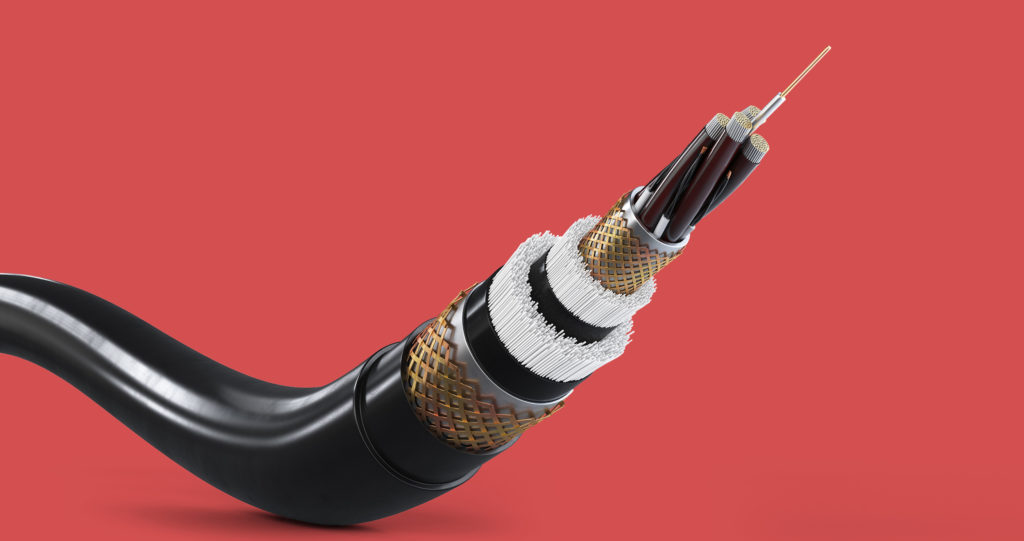
Top 5 Questions About Fiber Internet
6 commentsWho doesn’t want fiber-optic internet if they can get it?
You’re not alone. Statista reports that fiber adoption rates increased by 22% worldwide in 2019, while online searches for “fiber internet” have been steadily climbing since early 2020, according to Google Trends.
You want that fiber-optic service, but you just have 1 or 2 or 5 little questions left. We know what they are, and we know the answers.
1. Will fiber improve my Wi-Fi?
The fast answer is no. Fiber exists outside your home. Wi-Fi exists inside your home. Fiber delivers the internet to your home router, and Wi-Fi provides wireless access for all of your devices connected to the internet through your router.
Outside your house, fiber can improve the strength and reliability of your service, giving you great speed right up to your home. One reason is that fiber-optic cables are more resistant than traditional copper wires to potentially disruptive factors like temperature changes, water damage, and electrical interference.
Inside your house, fiber doesn’t have any effect on your home wi-fi network. Fiber-optics is all about the internet speed to your home, the potential for matching upload and download speeds, and the often increased ability to use multiple devices at the same time. Your internet speeds are dictated by the capability of your router. So if you have trouble with your wi-fi, your issues probably relate to your router. Being too far from your router or having thick walls can make your wi-fi reception spotty. Be sure your router is fiber-compatible, and it’s placed correctly. Then do a “dead-spot” evaluation (i.e. check your reception in various locations to find weak reception areas, aka “dead spots”) to determine whether you need to install a range extender or mesh network system.
2. Will fiber make my internet and TV streaming faster?
HP reports that fiber optics can consistently handle more users and more data at higher speeds than other broadband services. Fiber-optic internet consists of strands of plastic or glass about the width of a human hair. These strands transmit signals via pulses of light. Since fiber uses light instead of electricity, the signals can go farther, faster.
Plus, because fiber isn’t bound to the limitations of copper’s electricity and metal, it has more bandwidth available. This means multiple people in your household should be able to stream, game, or otherwise use your home’s TV and internet services without the risk of buffering, slower speeds, or interruption. As mentioned earlier, if you are connecting wirelessly through Wi-Fi, your router is critically important. Fiber-optic connections will, in the future, be able to reach speeds of up to 10 Gigabits (Gbps) per second, when it becomes available in the future.
3. What are the ways I can get fiber to my home?
You may think you’re at a loss if underground installation isn’t in the cards for your community anytime soon.
There are other fiber installation methods that providers use. Fiber may be available in your neighborhood through an aerial installation. This method involves using existing pole infrastructures that already exist around your neighborhood, then routing the fiber-optic cables to your home. Check with your local internet services provider to see if an aerial installation is underway now (or soon) where you live.
4. How long does it take to get fiber installed in my home?
Once you’ve got your exterior installation set up, the actual process of running the fiber line to your home, installing your fiber terminal, connecting to your router to get up and running should only take a few hours if no major complications or issues arise.
5. Do I need to upgrade my computer and wireless devices to get the most out of fiber?
In short: No, you typically don’t need to upgrade all of your electronics in order to properly take advantage of all that fiber has to offer. However, be sure that you stay current with any software or router updates for all the devices you’re connecting to your home network so that they’re optimized for best performance.




I still have At&T router and At&T cable boxes on my TV’s. Do I have to change them out ? Will Frontier remove all my old equipment ? I would like to keep it.
Hi Jean! This is a great question and I had to do a bit of research. It looks like you would be able to keep your TV boxes, but there may be changes to how the equipment is billed. The router would need to be upgraded because of some core changes to the technology delivering service to your home. With fiber, you would be upgraded and with our current promotions our 500+ speeds include Eero Pro 6 Wi-Fi mesh hardware. ^Michael
Over the years I have had TCI@home (not many will remember that) and then through the various mergers etc eventually to Comcast. Then I went to AT&T Uverse in Connecticut. So AT&T sold there U-verse system to Frontier which I stuck with for awhile. That technology was pretty amazing at what they could push over copper wire in 2011. But it was lagging an I switched to Comcast. But that got expensive so when Frontier put 1 g fiber in my neighbor hood, I jumped on it and couldn’t be happier. Flawless connection.
So what is my issue? I will be residing my house in the next year and I had a ton of telcom equipment from AT&T and Frontier (and indeed SNET (Southern New England Telephone) mounted on the outside of my house. These are no longer in use and when I reside I want them gone. Who is responsible for removing the devices and the wires to the pole?
Hi Jim, this is a great question! Yes, of course this is something we would help with, we just need to know when. To make it as convenient as possible I recommend reaching out to us via Social Media at the links below, and we can work with our field leadership to come remove old devices, network interfaces, and line from your home. ^Michael
So would my modem have to be in the basement as well to receive fiber ?
With Frontier Fiber there isn’t a modem, at least not by the name, but the device we could consider to be fulfilling that role is called the Optical Network Terminal or ONT for short. These can be installed inside or outside the home in an enclosure and from there coaxial or twisted pair wiring is used to connect to your gateway router. Great question, Eddie. ^Michael